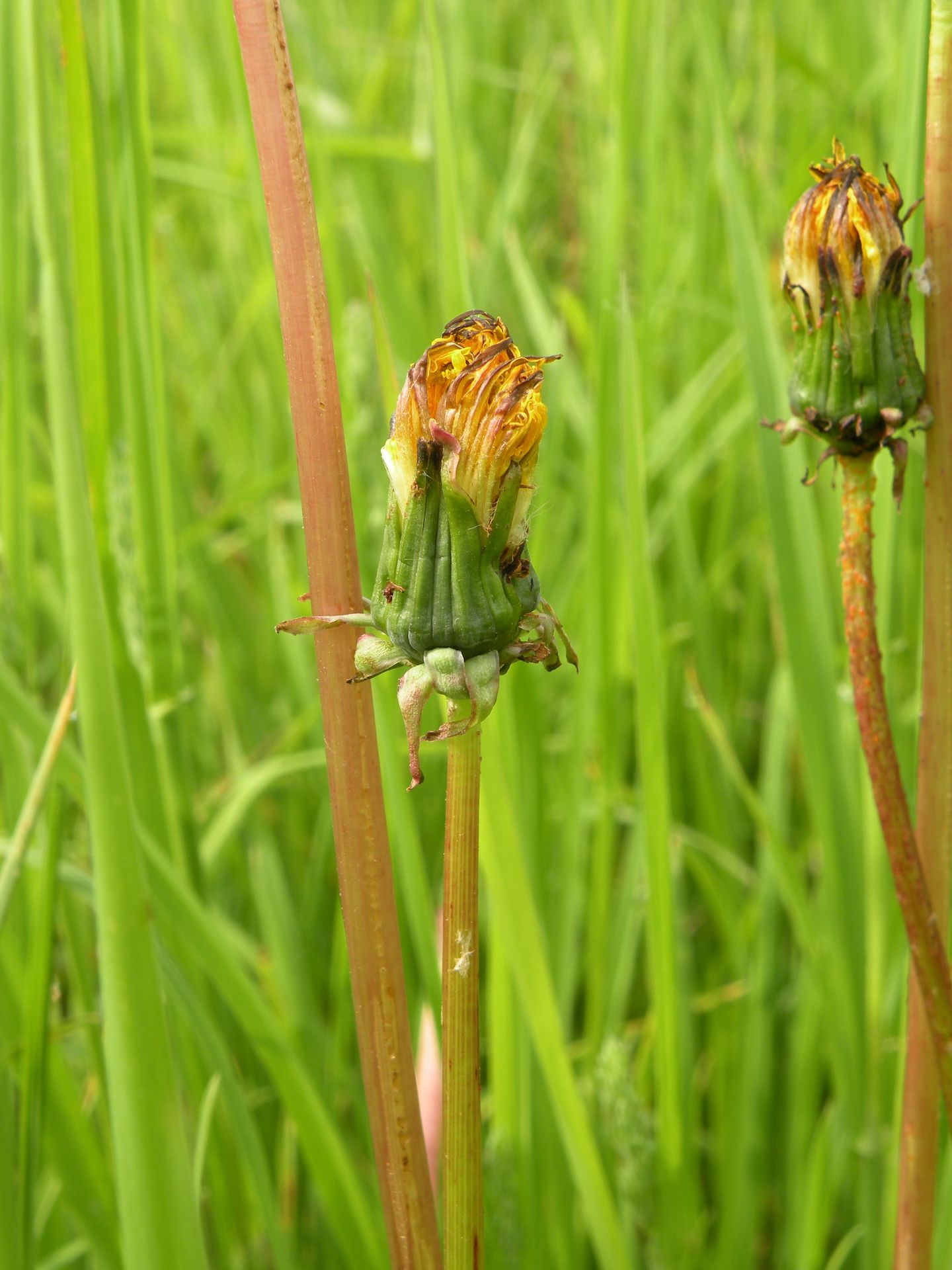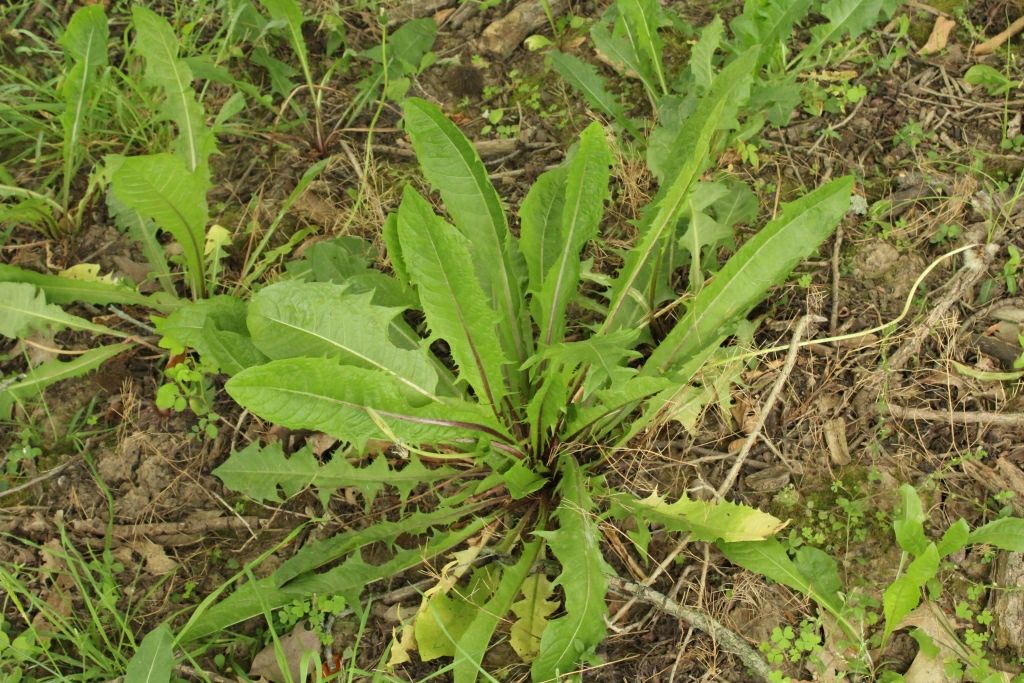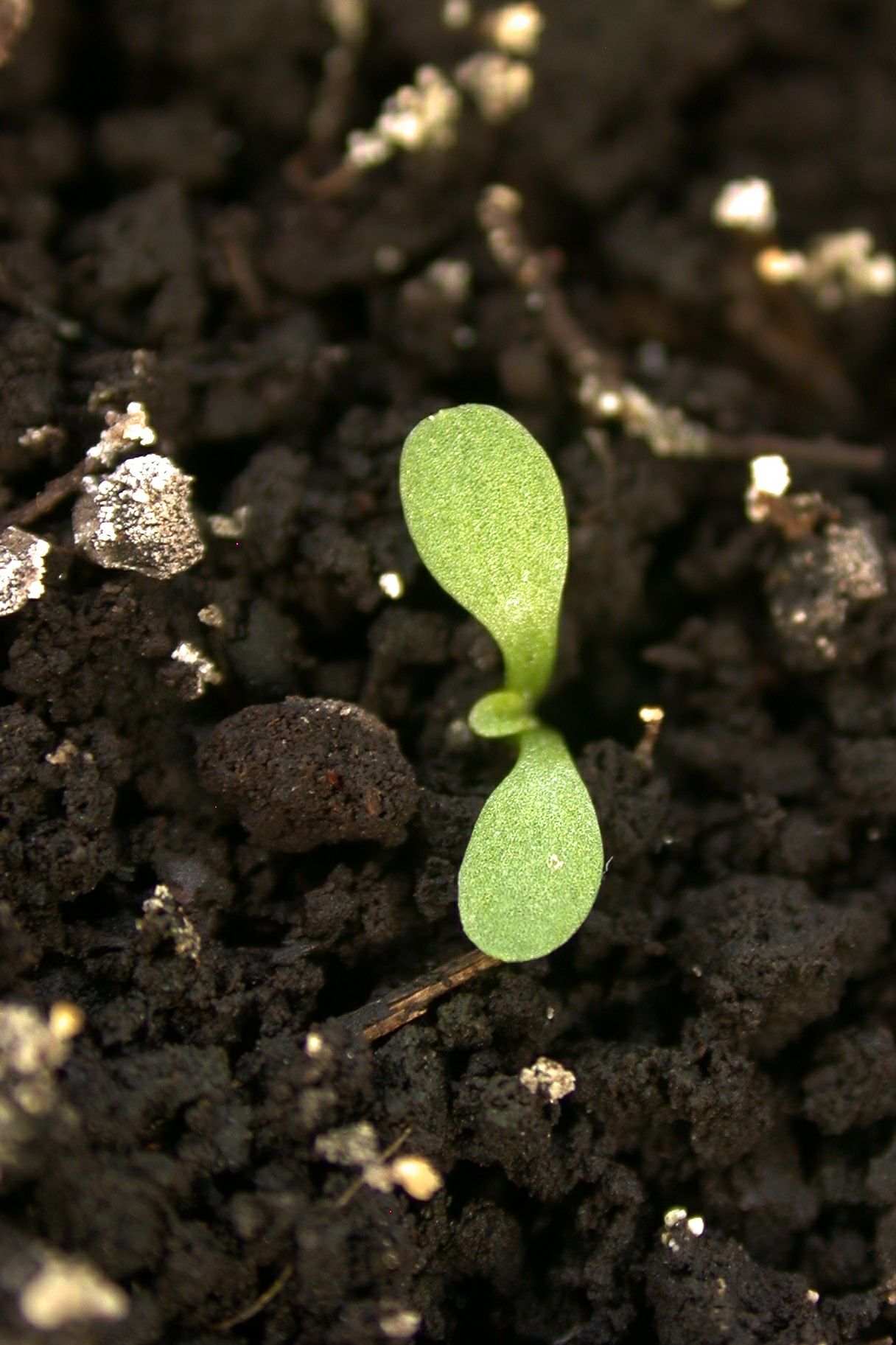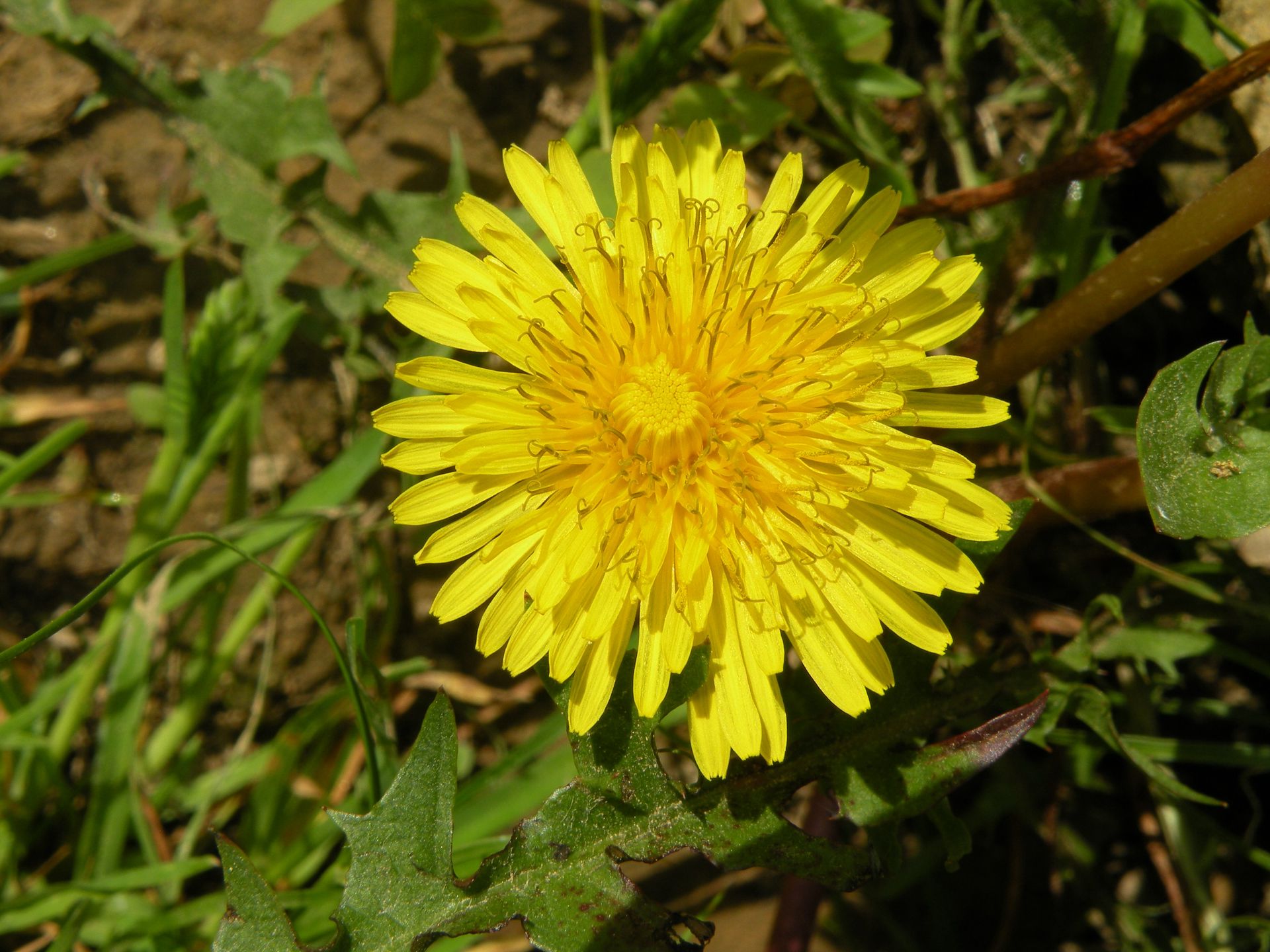Dandelion
Description.
This perennial herb is distinguished by its basal leaves with jagged edges, hollow stems that are leafless and terminate in a single yellow flower, and fluffy white seed heads. At maturity, all plant parts exude a milky juice if cut. Reproduce is by wind-blown seeds. Also, plants regenerate from root fragments.
The roots has a deep, thick, branched taproot that exudes a milky juice if cut.
Seed leaves (cotyledons) are pale, dull, yellowish-green, oval, and have smooth edges. Young leaves form a basal rosette and are oval to oblong with long hollow leaf stalks (petioles).
Stems are erect, 2 to 12 inches tall, hollow, leafless, filled with milky juice, and terminate in a single flower head.
The bright yellow, 1- to 2-inch-wide flowers form at the tips of long, hollow, flower stems. Flowers mature into fluffy white seed heads.
The single-seeded fruits are brownish, narrow, about 3/16 inch long, and tapering to a slender beak that is 2 to 3 times as long as the seed. At the top of the beak are soft, white, bristly hairs (pappus).
Area of Growth.
In lawns, on roadsides, on disturbed banks and shores of waterways, and other areas with moist soils.
Poison?
In general, dandelion is not toxic when taken in therapeutic amounts. However, we should consider that dandelion leaves, which can be eaten as a vegetable, are rich in oxalates so, taken in large quantity, can cause damage to the body. Poisoning has also been reported in children from eating dandelion stems.
Poisonous lookalike.
The common dandelion has no poisonous lookalikes. You can use other similar but less widespread Taraxacum species the same way you'd use the common dandelion. The leaves have at least some hairs, they're triangular in cross-section, and the plant gets much taller than the dandelion.
Lookalikes.
Rosette leaves of chicory (Cichorium intybus)closely resemble those of dandelion except the basal leaves of chicory are coarser and have more prominent hairs. Coltsfoot (Tussilago farfara) and dandelion flowers and seed-heads look similar but dandelion flower stems are much more slender and smooth and its flowers appear at the same time rather than before the leaves emerge. Dandelion and common catsear (Hypochoeris radicata) are easily confused due to similarities in the flowers and leaves. However, common catsear has hairy leaves with irregular rounded lobes and its stems have leaf-like bracts and branches.
Taste?
The taste of dandelion resembles a slightly bitter green like arugula. You can eat them fresh in salads, or cook them on the stove. The best part about eating dandelions just might be the price. Since they grow wild pretty much everywhere in the country, you have a completely free food source right in your backyard. The roots can also be used to make tea.
Good benefits.
Highly nutritious.
Contain potent antioxidants.
May help fight inflammation.
May aid blood sugar control.
May reduce cholesterol.
May lower blood pressure.
May promote a healthy liver.
May aid weight loss.
Bad benefits.
Inflammation of the tonsils (Tonsillitis). ...
Preventing urinary tract infections (UTIs). ...
Loss of appetite.
Upset stomach.
Intestinal gas (flatulence).
Constipation.
Arthritis-like pain.
Details.
Flowers form mostly in April and May, but flowers have been known to appear as early as February and as late as June. In some locations, secondary flowering occurs in autumn.
Countries founded.
Eurasia
Southern Canada
North america (in all 60 states)
And im over 60 countries.





Bạn đang đọc truyện trên: Truyen247.Pro